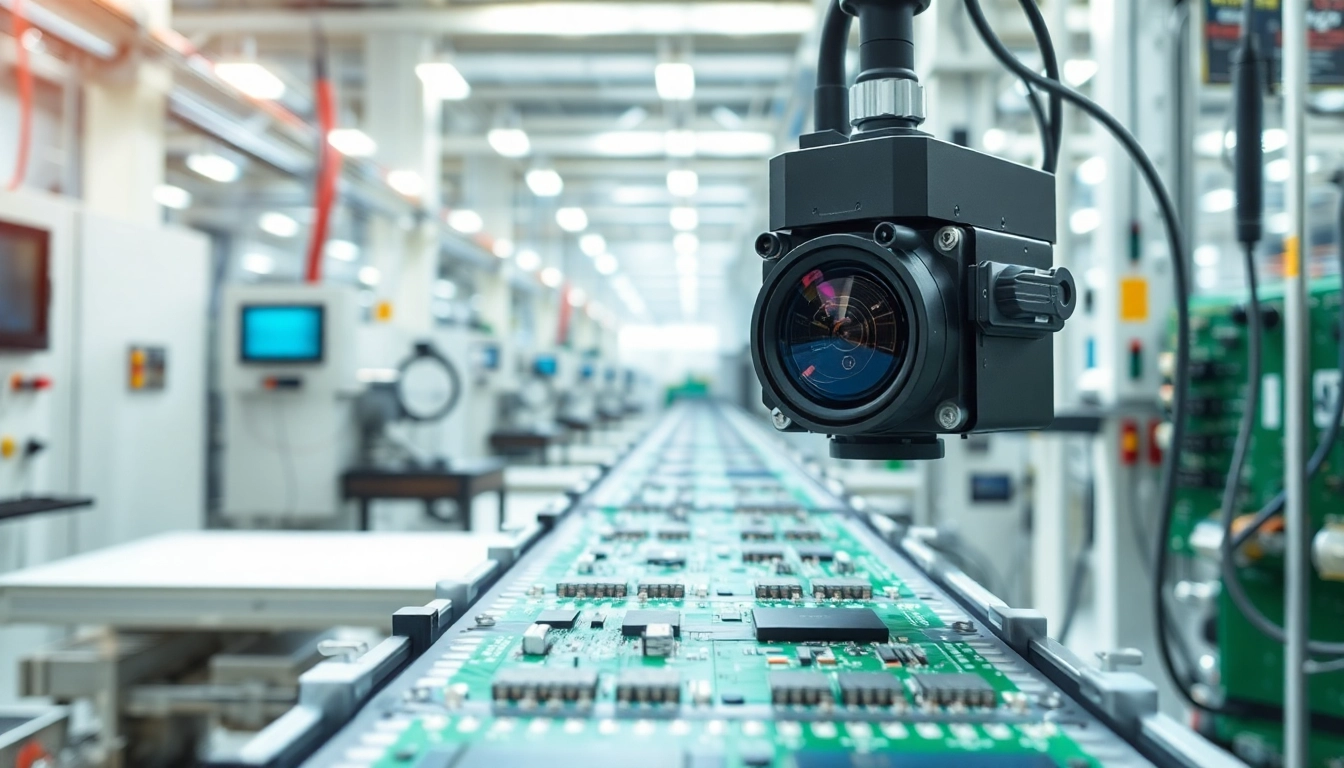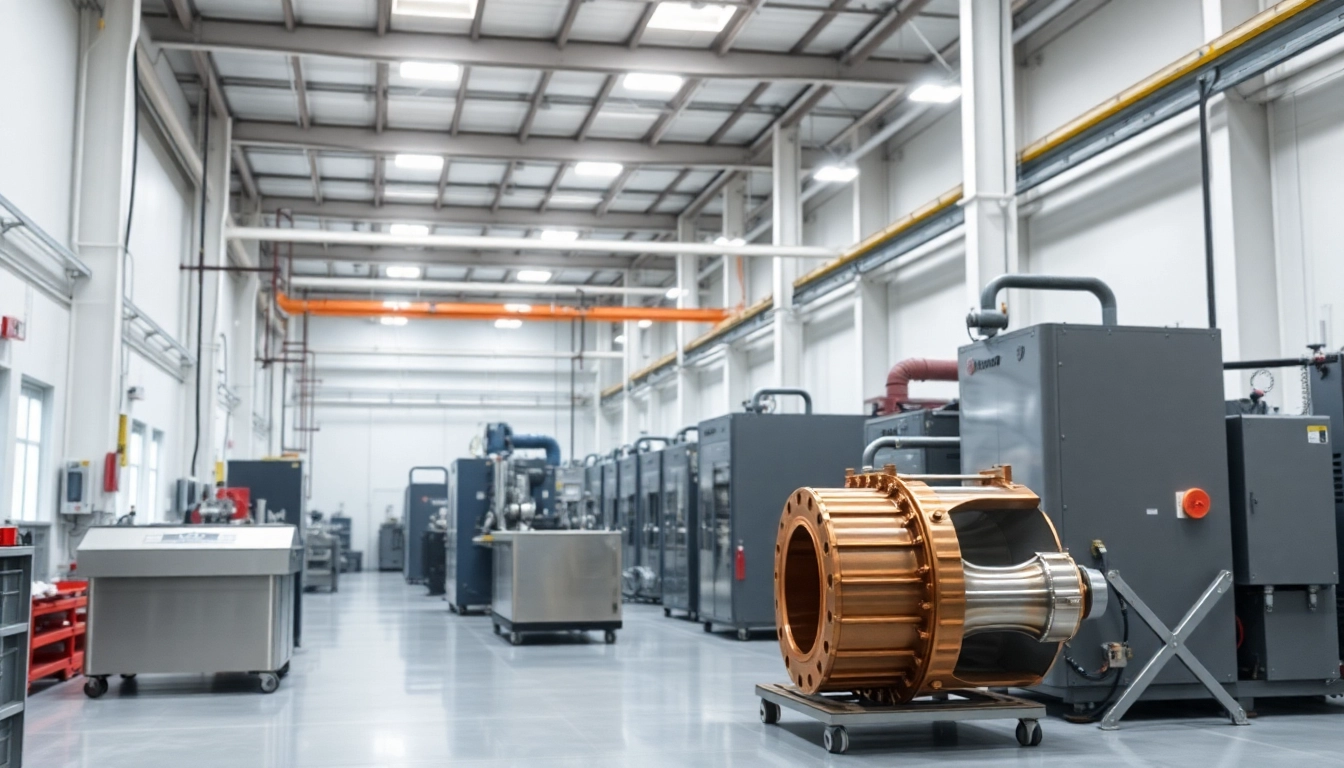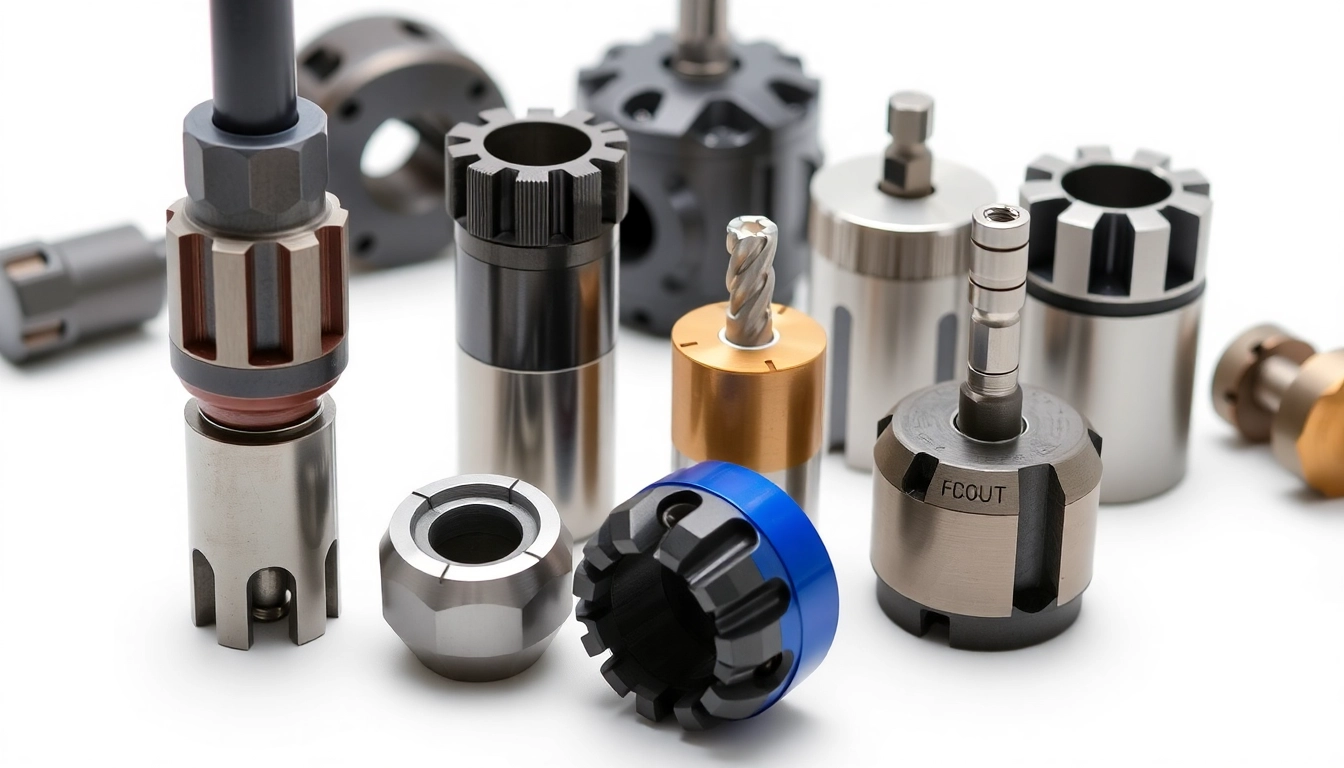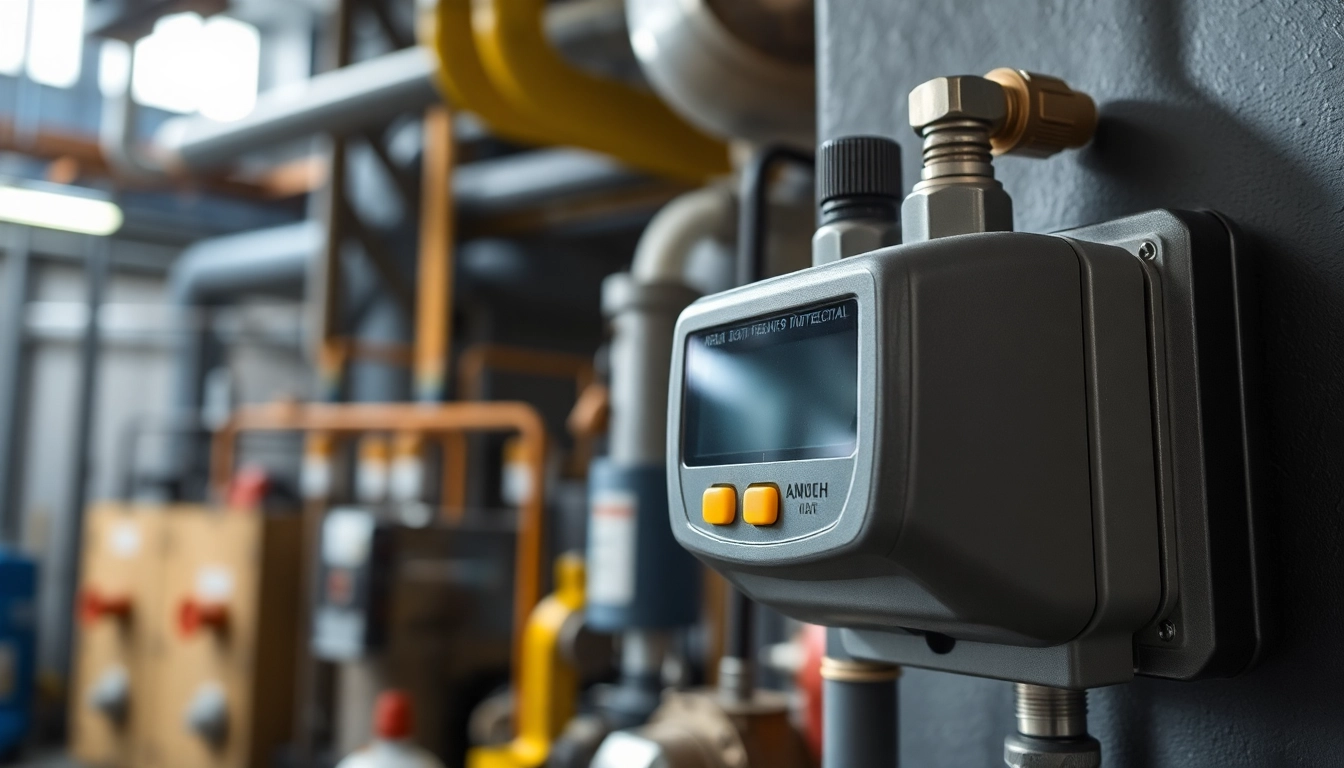What is Machine Vision?
Machine vision is a multidisciplinary domain that combines computer science, engineering, and optics to enable machines to interpret and understand visual data from the world, simulating human visual and cognitive processes. It involves utilizing cameras, sensors, and advanced algorithms to automate tasks such as inspection, guidance, and measurement. With the increasing demand for precision and efficiency in various industries, machine vision systems have emerged as essential tools for modern manufacturing, quality control, and robotics.
Definition and Core Principles
At its core, machine vision refers to the technology that allows computers and machines to process and interpret visual information. The main principle is to enable machines to “see” and “understand” images in a manner akin to human vision. This involves three critical components: image acquisition, image processing, and analysis.
- Image Acquisition: This is the initial phase where images are captured using cameras and sensors. Various types of cameras, including area scan, line scan, and 3D cameras, are employed depending on the application.
- Image Processing: After acquisition, images are processed using software algorithms that enhance, analyze, and interpret visual data. Processing techniques might include filtering, thresholding, and edge detection.
- Analysis: The processed images are then analyzed to extract meaningful information, which can include recognizing patterns, measuring dimensions, or detecting defects.
How Machine Vision Works
The working of machine vision systems can be understood through the workflow they follow:
- Image Capture: A camera is used to capture images of the object or scene of interest.
- Data Conversion: The captured images are converted from analog signals to digital data using an analog-to-digital converter.
- Processing: Digital images are processed to enhance quality and make them suitable for analysis. This processing can include adjusting brightness, contrast, and removing noise.
- Feature Extraction: Important features are identified from the processed images, such as edges, shapes, or colors, which are crucial for analysis.
- Decision Making: Based on the extracted features, decisions are made to classify or assess the quality and characteristics of the objects.
- Output Generation: Results are then outputted, which may include guiding robotic actions, triggering alarms, or storing data.
Applications of Machine Vision in Industries
Machine vision technology is employed across various sectors, greatly enhancing operational efficiency and product quality. Key applications include:
- Quality Control: It is extensively used to inspect products on production lines for defects or inconsistencies.
- Automation: Machine vision guides robotics for tasks like picking, placing, and sorting items.
- Measurement: Precise measurements are made for components in manufacturing to ensure they adhere to specifications.
- Identification: Barcodes, QR codes, and other identifiers are read and verified.
- Surveillance: In security applications, machine vision is used to monitor environments and recognize intruders or abnormal activities.
Difference Between Machine Vision and Computer Vision
Key Distinctions
While machine vision and computer vision may sound similar, they serve distinct purposes. Machine vision is primarily focused on automating inspection processes in industrial settings, using cameras and algorithms to analyze visual input. In contrast, computer vision encompasses a broader field that includes any technology that enables computers to interpret and understand images and videos, often employing artificial intelligence to analyze data and derive insights beyond basic tasks.
Common Misconceptions
One common misconception is that machine vision and computer vision are interchangeable terms. While they both involve image processing and analysis, machine vision is typically more specialized and often tied to industrial applications, whereas computer vision can be applied in diverse areas such as healthcare, autonomous driving, and augmented reality.
Comparative Applications
Machine vision can be seen as a subset of computer vision. Here are some comparative applications:
- Machine Vision: Used in assembly line inspection to ensure all components are correctly installed.
- Computer Vision: Utilized in autonomous vehicles to understand the driving environment and make navigation decisions.
Components of a Machine Vision System
Cameras and Imaging Technologies
Cameras are crucial in any machine vision system as they act as the ‘eyes’ of the system. Common types include:
- Area Scan Cameras: Capture 2D images and are used extensively in inspection tasks.
- Line Scan Cameras: Capture images one line at a time and are efficient for high-speed applications.
- 3D Cameras: Provide depth information and are used in applications requiring more data, like part assembly.
- Infrared Cameras: Useful in environments where traditional cameras may not perform well, such as low-light conditions.
Lighting and Environmental Considerations
Proper lighting is essential for high-quality image acquisition in machine vision systems. Numerous lighting options include:
- Diffuse Lighting: Helps minimize shadows and highlights surface defects.
- Backlighting: Illuminates objects from behind, enhancing edge detection.
- Structured Lighting: Projects patterns onto an object to facilitate 3D imaging.
Environment factors such as temperature, dust, and vibrations must also be considered, as they can significantly impact system performance.
Software and Processing Algorithms
The software is the brain of a machine vision system, responsible for processing and analyzing captured visual data. Various algorithms are employed, including:
- Image Processing Algorithms: Enhance image quality through noise reduction and contrast adjustment.
- Machine Learning Algorithms: Apply AI methods to recognize patterns and make predictive analyses based on historical data.
- Real-Time Processing: Enables immediate response in applications requiring rapid decision-making.
Implementing Machine Vision: Best Practices
Steps for Successful Integration
Integrating machine vision systems into existing processes demands careful planning. Here are essential steps:
- Identify Objectives: Define clear goals and expectations for the machine vision system.
- Select Appropriate Technology: Choose cameras, lighting, and software that fit the specific application requirements.
- Pilot Testing: Conduct pilot tests to assess performance and make necessary adjustments.
- Train Personnel: Ensure staff is adequately trained to operate and maintain the machine vision system.
- Continuous Evaluation: Regularly assess the system to identify areas for improvement and ensure it meets evolving needs.
Common Challenges and Solutions
Several challenges may arise during the machine vision implementation process. Some of these include:
- Lighting Issues: Inadequate or inconsistent lighting can hinder image quality. Solution: Invest in adjustable lighting systems that can be tailored to specific tasks.
- System Complexity: High complexity can lead to maintenance challenges. Solution: Opt for modular systems that allow for easier updates and repairs.
- False Positives/Negatives: Incorrect detection can occur, compromising reliability. Solution: Continuously train systems with diverse datasets and improve algorithms through machine learning.
Measuring Performance and ROI
To assess the effectiveness of a machine vision system, key performance indicators (KPIs) should be established, including:
- Accuracy Rate: The percentage of correctly identified defects versus total items inspected.
- Throughput: The number of items processed in a given time frame.
- Cost Savings: Evaluating reduced labor costs and increased efficiency.
Regular analysis of these metrics allows businesses to gauge the return on investment and adjust strategies accordingly.
The Future of Machine Vision Technology
Emerging Trends and Innovations
The machine vision landscape is consistently evolving due to advancements in technology. Notable trends include:
- Artificial Intelligence: AI integration enhances machine vision systems by improving accuracy and enabling adaptive learning.
- Edge Computing: Processing data closer to the source reduces latency and bandwidth usage, facilitating real-time decision-making.
- Integration with IoT: Machine vision systems are increasingly being paired with IoT devices, allowing for seamless data sharing and improved analytics.
Impact of AI on Machine Vision
Artificial Intelligence stands to revolutionize machine vision by allowing systems to learn from data patterns. This leads to improved effectiveness in tasks such as defect detection and predictive maintenance, enabling manufacturers to reduce downtime and enhance product quality.
Case Studies and Success Stories
Numerous organizations have successfully implemented machine vision systems with significant results. For instance:
- A Automotive Manufacturer: By deploying a machine vision system for assembly line inspection, productivity increased by 30%, and defects were reduced by 50%.
- A Food Processing Company: Implemented machine vision for packaging inspections, leading to a 40% decrease in manual checks and ensuring consistent quality.
These examples illustrate the tangible benefits and competitive advantage machine vision can offer across industries.



